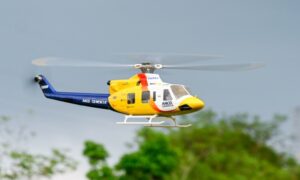Trees are not just an essential part of our natural environment; they also enhance the beauty of our landscapes and provide numerous benefits. However, trees can become a potential hazard during storms, heavy winds, or due to various other factors.
Understanding tree safety and preparing for and responding to emergencies is crucial to protecting lives and property. Let’s explore the importance of tree safety and provide tips and guidance on preparing for and responding to Tree Service Irvine CA related emergencies.
A. The Importance of Tree Safety
- Protecting Lives and Property
When healthy and well-maintained, trees are valuable to any property; they provide shade, improve air quality, and increase property value. However, when trees become weakened, diseased, or damaged, they can seriously threaten lives and property. Falling branches or uprooted trees can cause extensive damage, injury, or even loss of life. Prioritizing tree safety is essential to prevent such incidents.
- Preserving the Environment
Trees are an integral part of our ecosystem. They provide a habitat for wildlife, help control soil erosion, and play a crucial role in the carbon cycle. By maintaining tree safety, we can prevent the unnecessary removal of trees and ensure the preservation of our environment.
B. Preparing for Tree Emergencies
- Regular Tree Inspection
Regular tree inspections by a certified arborist or tree care professional are essential for identifying potential issues early on. These inspections can uncover signs of disease, structural weakness, or other problems that might lead to tree emergencies. Early detection allows for preventive measures to be taken.
- Pruning and Maintenance
Proper tree maintenance, including regular pruning, is key to reducing the risk of tree emergencies. Pruning can help eliminate weak or dead branches susceptible to breaking during storms. Trimming can also improve a tree’s overall health and structural integrity.
- Selecting the Right Tree Species
Consider the local climate and soil conditions when planting new trees on your property. Select tree species that are well-suited to the area to minimize the risk of future emergencies. Native trees are often a wise choice because they have adapted to the local environment.
- Avoiding Overcrowding
Trees planted too closely together can compete for resources, leading to poor growth and instability. Ensure proper spacing between trees to promote healthy growth and minimize the risk of tree-related accidents.
- Soil Care
Healthy soil is vital for a tree’s stability and growth. Regular soil testing can help identify nutrient deficiencies or pH imbalances that may compromise a tree’s health. Appropriate soil care measures can be taken based on the test results.
C. Responding to Tree Emergencies
- Safety First
In a tree emergency, prioritize your safety and that of others. Please stay away from the tree and the immediate area around it. Fallen branches can be under tension and unpredictable, so exercise extreme caution.
- Assess the Situation
After ensuring your safety, assess the extent of the damage and the potential risks. Is the tree completely uprooted or just damaged? Are there any live electrical wires involved? Make these observations before deciding on your next steps.
- Contact Professionals
Contacting a certified arborist or a tree care professional is best for emergencies. They have the expertise and equipment to remove or address the issue safely. Avoid attempting to handle the situation yourself, as it can be dangerous.
- Emergency Tree Removal
If the tree threatens people or property, it must be removed immediately. Tree removal should be carried out by experienced professionals who can assess the situation and safely eliminate the hazard.
- Post-Emergency Assessment
After resolving the tree emergency, consider conducting a comprehensive inspection of your property to identify other trees that may pose a risk. Address any issues promptly to prevent future emergencies.
The cost associated with tree safety can vary significantly depending on the specific measures taken and the extent of the work required. Here are some key cost considerations related to tree safety:
- Regular Tree Inspections: Hiring a certified arborist or tree care professional to conduct regular tree inspections typically involves an inspection fee. The cost can vary depending on the number of trees, location, and the complexity of the inspection.
- Pruning and Maintenance: The cost of pruning and maintenance depends on the size, type, and condition of the trees. Smaller, well-maintained trees may cost less to prune, while larger or more challenging jobs may be more expensive. Tree care companies often charge by the hour or on a per-tree basis.
- Tree Removal: If a tree poses an immediate hazard and needs to be removed, the cost can vary widely depending on the tree’s size and location and the removal’s complexity. Large trees or trees in challenging locations may be more expensive to remove. Costs can also increase if there are safety concerns or if the tree is near structures or power lines.
- Emergency Response: Hiring a professional Emergency Tree Service for immediate response and removal can be costly if you encounter a tree emergency. Emergency tree removal is typically more expensive than planned removal due to the urgency and potential dangers.
- Soil Testing and Care: Soil testing is generally not too expensive, but costs can vary depending on the number of samples taken and the depth of the analysis. The cost of soil care measures such as fertilization or pH adjustment will depend on the specific recommendations from the soil test.
- Tree Replacement: If a tree is removed due to safety concerns, consider planting a replacement tree. The cost of purchasing and growing a new tree can vary depending on the size and species of the tree.
Trees are a beautiful and essential part of our environment, but they can become a hazard if not properly cared for. By prioritizing tree safety and taking proactive measures to prevent emergencies, we can enjoy the benefits of trees while minimizing risks. Remember to conduct regular inspections, perform maintenance, and be prepared to respond appropriately to tree-related emergencies. Protecting lives and property and preserving the environment are all part of being responsible stewards of our trees and landscapes.





























